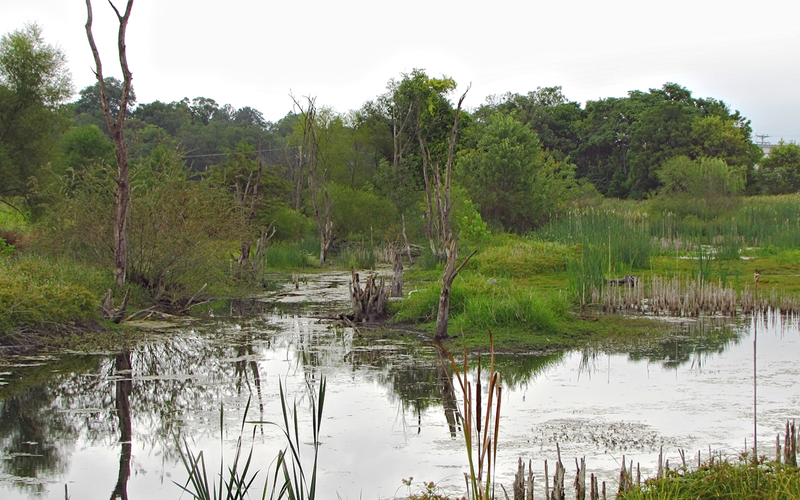"It's a dangerous business, Frodo, going out your door. You step onto the
road, and if you don't keep your feet, there's no knowing where you
might be swept off to." — J.R.R. Tolkien
I had an errand this morning, to pick up a refill at the pharmacy. Since that's across town, I figured I'd use the walk to assess the possibility of wandering about a bit after the pick-up. At the time it was heavily overcast, mild, and very humid; it felt, and looked, like rain was imminent. But after picking up my refill I decided to go another 100 yards up the road to where it crossed Burd Run to see how the creek looked. And on the way I discovered a path that ran beside a cornfield and led directly to one of my favorite local wetlands; I'd discovered the "back door" to the Brookside Ave. wetland, leading right to the collection pond.
I haven't been to Brookside since the end of April, when I discovered that two years of frequent rain had filled the pond right to the brim of the berm around it (see the post about it here). Since then both July and August have been much drier, and the collection pond has sunk back a good bit from its previous level. What has emerged from that is something that looks like a swamp more than a pond, and a vibrant, lively swamp at that. The water level is still such that everything is well irrigated and lush, yet there's enough land above water to support a thriving plant and animal population. For me it was beautiful, truly a land of enchantment.
The quality of light this morning added to that sense of enchantment, and was perfect for photography. The heavy overcast made the colors more vibrant, and I had little to do in processing on the computer - just cropping and a little lightening of the darker shadows. So what you see in the following photos is pretty much as I saw it with the naked eye walking there this morning.
See, this is why I always carry my camera with me whenever I go out the door. You never know what will happen once you step out on the street, even on the simplest errand. Bilbo's warning to Frodo, quoted at the top of this post, is true!
© 2019 by A. Roy Hilbinger






















































































